Grapes
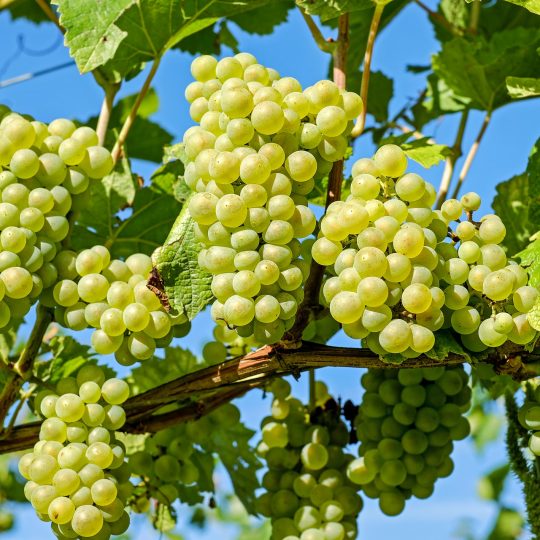
Importance of Grapes to Oregon
Most of Oregon’s grapes are used for making wine which is a beverage for adults. In 2018, grapes for wine ranked seventh on Oregon’s top 20 commodities with a value of $208,726,000. There are just over 33,000 acres of vineyards planted in the state of Oregon which is the same size as 33,000 football fields! In 2017, a record amount of grapes were grown in Oregon, a total of 77,000 tons of wine grapes were harvested. The weather and soil types in the Willamette Valley provide perfect growing conditions leading to many successful vineyards.
History of Grapes
Grapes have been grown in Oregon since the 1800s. George Simpson was at a social event in London, England when he decided to put both apple and grape seeds in his pocket. He forgot that he had put the seeds in his pocket for a few months before remembering and giving them to John McLaughlin. John took the seeds and planted them. The grape seeds grew and that marks the start of the Oregon wine industry!
Grape Varieties
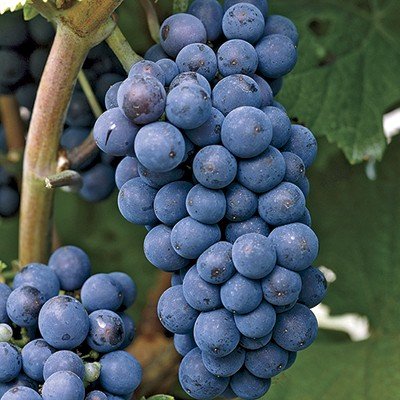
Concord
Concord grapes are used for making products like jam and jellies. They are a medium sized fruit and they are a dark blue to purple color when they are ripe. When the grapes are growing they have a natural film or light dust that keeps them protected from water and prevents the fruit from cracking. The skin on these grapes can be easily removed without breaking the fruit. Concord grapes are ripe from late summer to early fall.
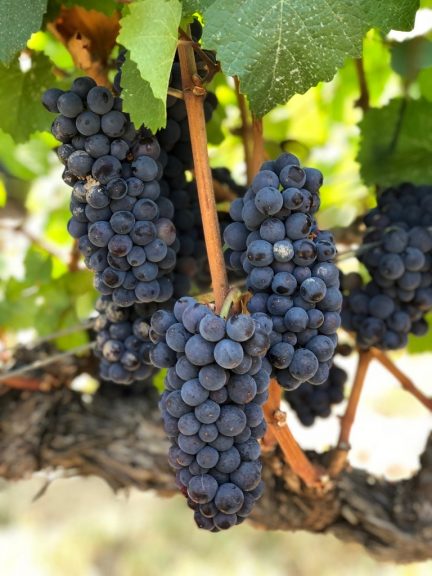
Pinot Noir
This grape is used for making red wines. This variety of grape is a mixture between a red and a black color. It is often described as having a distinct spiciness taste, like that of cinnamon or mint. Pinot noir grapes grown in Oregon tend to be more acidic than those grown in other places.
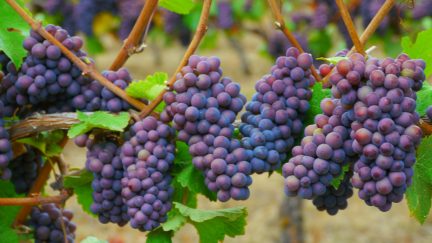
Pinot Gris
This grape variety is used for making white wine. The flavor this grape produces is similar to a faint lemon, citrus or floral flavor. Pinot gris grapes can make a very soft wine or a very rich wine. This grape variety is one of few white wines that is capable of aging.
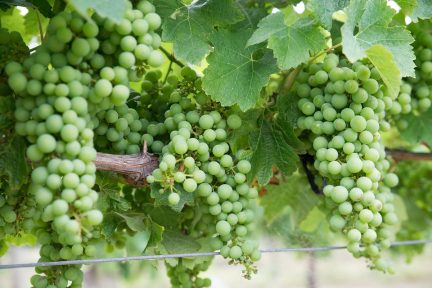
Chardonnay
This grape has a taste resembling that of apples, lemon or peaches. Wine made from Chardonnay grapes, has a faint flavor and can be lost in the presence of other grapes with a more powerful flavor.
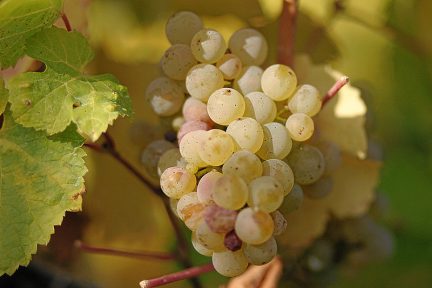
Riesling
Riesling grapes are used for making white wine. This variety of grape has a very strong flavor with apple or floral tasting characteristics. The Riesling grape variety can be used for making dry wines and sparkling wines.
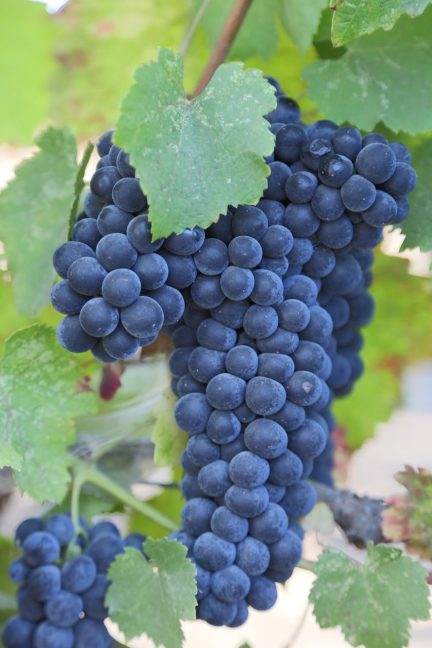
Cabernet Sauvignon
Cabernet sauvignon grapes are the world’s most known red wine grape variety. This grape has a very thick skin which has a high level of tannins. The tannins in this wine make the structure of the wine stronger than other wines. Tannins cause the wine taste bitter. When someone drinks wine with lots of tannin in it, there is a chance there tongue will be left dry.
Life Cycle of a Wine Grape
Grapes are grown on vines. The vines are planted in rows close together. Growing grapes is a long process. Grape vines have to be established in the ground for three years before any grapes will grow. Grapes vines are pruned during the winter months from January through March. When pruning grape vines, clippers are used to cut about 90% of the previous season’s cane from the plant. Leaf removal is the process of clearing all of the leaves close to the grape clusters.
Removing the leaves will give the fruit more exposure to sunlight, helping to prevent the growth of fungus on the fruit. It allows the air to flow more consistently. Suckers are also removed during this time. Suckers are extra shoots or vine growth that occur at the base of the plant. It’s important to remove suckers so that they are not competing for nutrients and water that productive vines on the plant need to survive. The amount of sugar in grapes is measured by a “Brix” scale. This scale measures the amount of sugar in the fruit which determines how ripe the grape is.
Watch the animated video below describing the grape growing process!
Grape Harvest
Grapes are harvested in two different ways. The way grapes are harvested is often dependent on the preference of the viticulturist.
The first, and most common, method of wine grape harvesting is done by hand. It might be surprising to some people that grapes are still harvested by hand, but it is the most efficient method of harvesting grapes because it is more gentle on the fruit. When grapes are harvested by hand, the people who are picking the grapes off of the vine are able to discard any rotten grapes or leave the unripe grapes on the vine to continue growing.
The second method to harvest grapes is done by a machine. As you can see in the video, there is a machine that goes over each row of grapevines and shakes the vines until the fruit falls off. This method is extremely fast compared to the hand picking method; however, there is a lot of room for mistakes to be made when it comes to the fruit being smashed, rotten fruit becoming mixed with the fresh grapes and the possibility for unripe grapes to be picked too soon.
Click on the link below to watch a fascinating video of a mechanical grape harvest being done with Pinot noir grapes grown here in Oregon!
Pests and Diseases
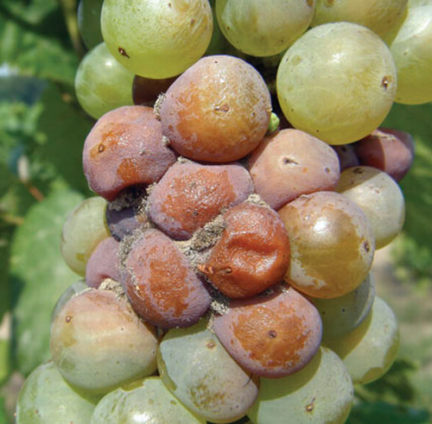
Botrytis Bunch Rot
The most common fungal rot found in wine grapes produced in the Pacific Northwest and Oregon is Botrytis Bunch Rot. This fungal rot can happen at any stage of growth between the blooming stage all the way until post-veraison, which is when the grapes ripen. One way to prevent Botrytis Bunch Rot is by ensuring the grapes are completely covered by a secure canopy system. Another way to prevent this rot from ruining wine grapes is by using fungicides during the right time of growth. Fungicide application should happen at the bloom of the grape and right before bunch closure.
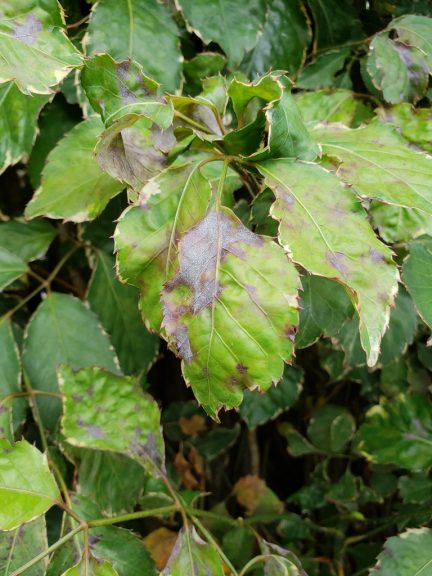
Downy Mildew
This is a very aggressive fungal disease that ends in most of the grapes not being usable. This fungus attacks any of the plant that is green, especially destroying the leaves. The plant is often left with bruise like spots that are often yellow and brown in color. These bruises are usually between the veins of the leaves. This fungal disease can be eradicated by pruning the buds from infected plants and cleaning the grape vines by removing the fallen leaves to prevent the spread of disease. Fungicides can also be used to kill this pathogen.
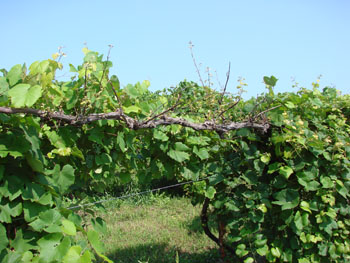
Dead Arm of Grapevines
Grape vines will not produce the regular shoots or stems like a healthy plant does. The leaves on these plants will be yellow and cupped. Plants that have dead arm grapevines will not produce grapes that are a uniform size and will often dry up and fall off of the vine. One way to prevent this from ruining your plants is to remove all extra leaves and stems from the ground around the vines.
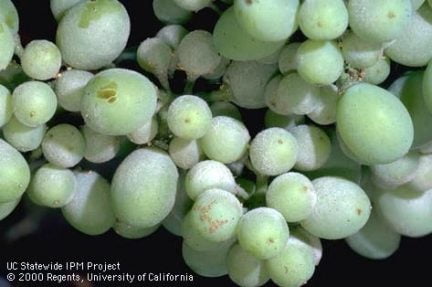
Powdery Mildew
Powdery mildew is a fungal disease that attacks all aboveground plant parts. The above ground plant parts are also known as the “green tissue” of the plant. Powdery mildew, in the early stages, appears in white to gray patches on leaves and can ultimately cover both sides of the leaf. This fungal disease appears white and gray on fruit but the color will eventually turn into a brown color. When fruit becomes infected with powdery mildew it will often times crack and drop from the rest of the grapes. When a grape blossom becomes infected it will dry up and fruit will not grow.
This fungal disease is extremely common in the wine grape regions of Oregon. Powdery mildew can be managed by keeping canes cut back, managing the ground below the vines and management of water and fertilization.
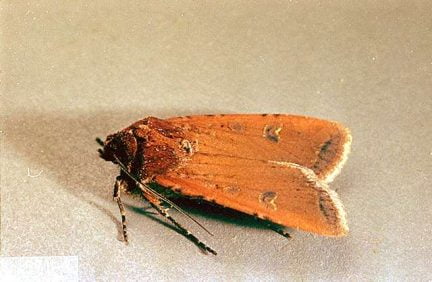
Cutworms
Cutworms injure grapevines because they feed on the grape buds and the young shoots on the vines. Adult cutworms appear as dark gray moths measuring at about 1 inch long. Cutworm infestations are usually found within the boundaries of a vineyard and will often reappear each year. Treating entire vineyards for cutworms is fairly uncommon because they often stay in the same location.
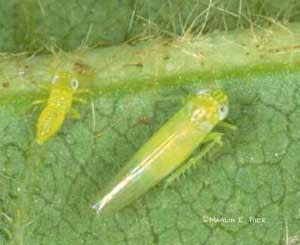
Western Grape Leafhopper
Leafhoppers live in the plant debris and leaf residue on the floor of vineyards. The leafhoppers pierce leaf cells and eat the contents of the leaf. Every time a leafhopper eats a leaf a white spot is left behind. When a leaf is extremely damaged it will turn yellow and brown and eventually it will fall of the vine. In order to control western grape leafhopper grape growers can till the soil to remove weeds, mow in between the grape vines in the early grape growing season and removing suckers and leaves during berry set and two weeks after berry set.
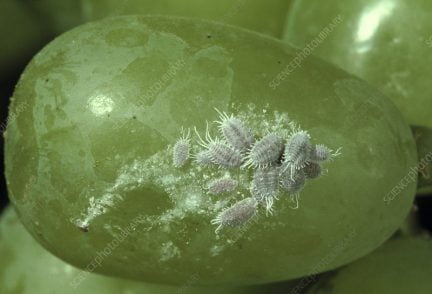
Mealybug
Grape mealybugs contaminate fruit with egg clusters and adults. Mealybugs migrate in clusters and can cause direct crop damage when they land on the grapes as well as the wood of the trunks. Mealybugs can spread across entire vineyards which will ultimately reduce crop yields and the quality of the grapes over time. Once a mealybug population is found, farmers should use commercial pheromone traps to aid in getting rid of the population.
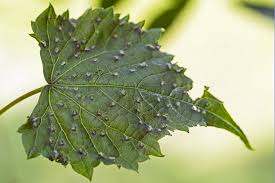
Phylloxera
Grape phylloxera appears as small, aphid like insects. They live and feed on the roots of grapevines. When roots are eaten by phylloxera, growth is stunted and vine death increases. A vine can die between three to ten years after being infested with phylloxera depending on the climate. Vines in drier climates will die quicker because of the shortage of nutrients and water. One way that grape growers can reduce the damage done by this insect is to plant vines that are grafted to phylloxera-resistant rootstock. Once a vineyard is infected with this insect, there is no going back to a phylloxera free vineyard. It only takes one little insect to ruin an entire vineyard.
Uses for Grapes
The grapes grown in Oregon are primarily grapes that are used for wine production. Once the grapes are grown and harvested, they are processed into an alcoholic beverage, wine. Wine is sometimes used in cooking to add flavor to dishes.

Fun Facts About Grapes!
- There are approximately 35,600 acres of vineyards planted in the state of Oregon.
- In 2017, the year of highest production of grapes in Oregon, was 2017 when 77,000 tons of grapes were produced.
- There are over 700 wineries in the state of Oregon.
Vocabulary Terms
Fungicide
A substance, as a spray or dust, used for destroying fungi.
Veraison
The beginning of ripening when the color of the berry changes.
Bunch
A connected group; cluster.
Tannins
Naturally occurring compound found in plants, seeds, bark, wood, leaves and fruit skins that makes something like wine have a bitter taste.
Viticulturist
A person who grows grapes or studies the science of grapes.
Suckers
A shoot from the roots or lower part of the stem of a plant.
Cane
A hollow, usually slender, and often flexible jointed stem.
Brix
A measurement of the sugar content of grapes, must and wine, indicating the degree of the grapes’ ripeness at harvest.
